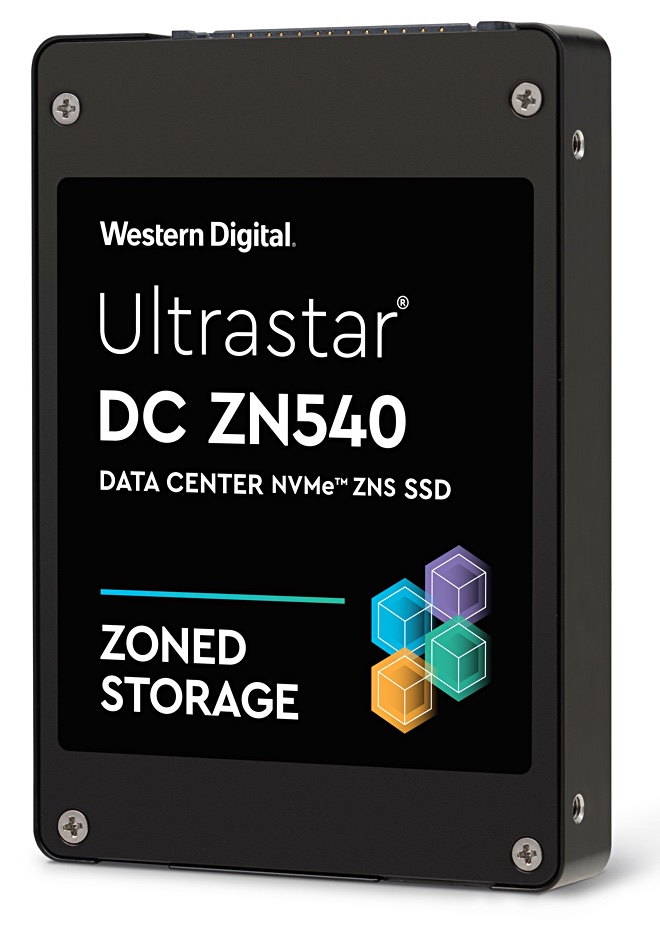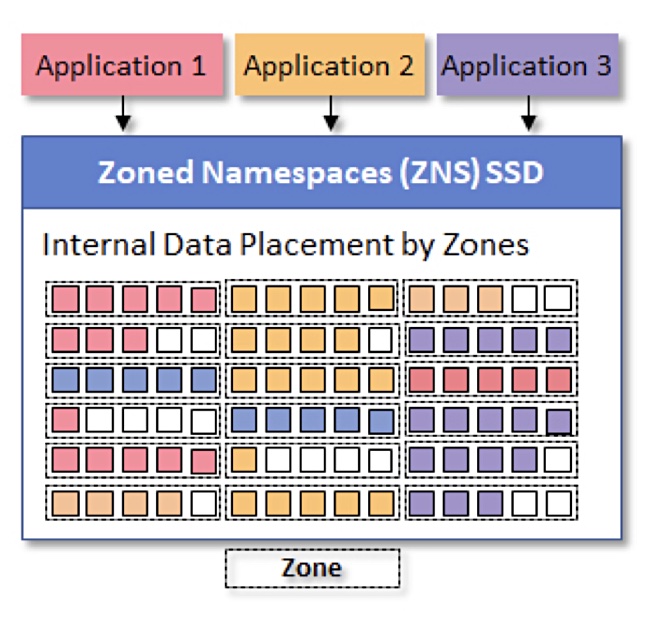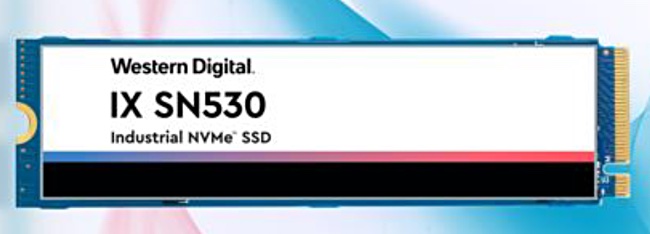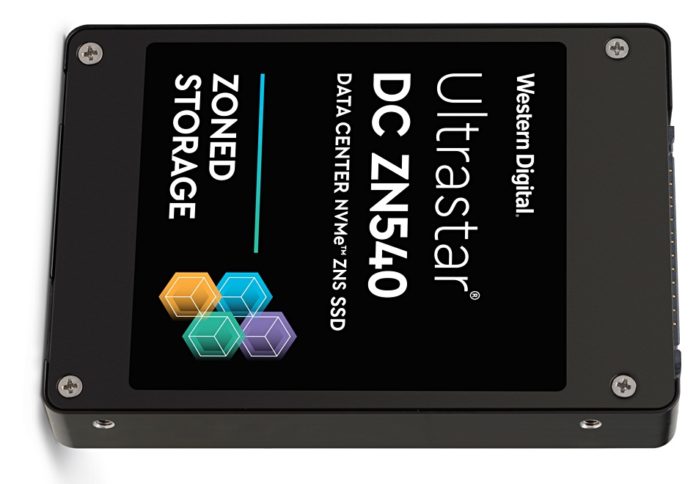Western Digital has announced its first zoned SSD, the ZN540, and is targeting the device at cloud infrastructure providers.
Officially called the Ultrastar DC ZN540 ZNS NVMe SSD, the drive is for customers who need a large number of drives to run as efficiently as possible. WD suggests the drive is suited for multi-tenancy environments and data-centric applications such event stream processing. It is claimed to deliver up to 4x performance and 2.5x QoS improvements compared to conventional SSDs.

The ZN540 is a U.2 (2.5-inch) format, dual-port drive using an NVMe 1.3 PCIe Gen 3 interface.
The drive is built with 96-layer 3D NAND organised as TLC (3 bits/cell) and has up to 8TB capacity. WD does not say what the other capacity points are. Because server software manages the ZN540, WD is providing neither performance data nor endurance numbers. It is not backwards-compatible with existing SSDs
The host server manages data placement for the ZN540, a design that optimises performance and prolongs usable life by minimising writes. When the host application knows which data is variable in content, and its size, it can place different types of data in different zones. That means unchanging data blocks are not disturbed by deletions of small data items in the same blocks – which would eventually trigger a garbage collection process.
The ZN540 complies with the ZNS Command Set 1.0 specification (TP 4053, TP 4076). However, only WD produces drives that meet this specification. In other words, customers are looking at single-sourcing. They also need their Linux host server SW updated to v5.9 to support zoned SSDs and the application code to manage the zoned SSDs. We understand Kioxia is active in the NVMe technical working group for ZNS. That’s promising.
WD is sampling the ZN540 to select customers.
Zoning scheme
Zoning divides the SSD’s capacity into zones and places data in a zone according to its IO type. A zone can only be written sequentially and it must be erased before new data is written to it. Non-zoned SSDs have controller software with a Flash Translation Layer (FTL) which manages data placement on the drive.
The FTL finds and recovers erased blocks, 4KB in size, in a so-called garbage collection process which involves moving data around the drive (read, move and rewrite) to create 4K blocks of empty space that can be used for new data. Empty space to act as an internal buffer is needed for this and this space cannot be used for storing data.

Many data writes to the drive are smaller than 4KB in size, and deleting them involves a 4KB block being left partially written, hence the need for garbage collection processing. Host-managed zone drives have zone management software to do this job. It should aggregate small random writes into a 4KB data set or chunk which can be written with a single write process into a 4KB block in the SSD.
This reduces the total amounts of writes to the drive, known as the Write Amplification Factor) and so extends the drive’s life, while stopping any reads being delayed by a garbage collection process.
The Zoned Storage website has information that can help storage engineers and designers.
And in other news
WD today also announced a capacity bump for the WD Blue content creation gumstick drive, and launched the X SN530n NVMe industrial-class gumstick drive.

The WD Blue SN550 is an NVMe M.2 format drive with 2TB capacity, doubling the current Blue SN550’s 1TB maximum. It is intended for internal use on PCs and notebooks and supports up to 2.6GB/sec sequential read speed. The drive costs $249.99 MSRP and is available now.

The NVME M.2 format is also used for the IX SN530 ,which is designed for harsh environment use. Its working temperature range spans from -40°C to +85°C, and it has a 20G operating vibration specification. The capacity range is 256G to 2TB with WD again not specifying the intermediate levels. This TLC drive delivers up to 2.4GB/sec sequential reads and 1.95GB/sec sequential writes. It supports projected 5.2PB written during its life.
An SLC Version, due in January, will have an 85GB to 340GB capacity range and a support 24PB written during its working life.
The IX SN530 is sample shipping now.








